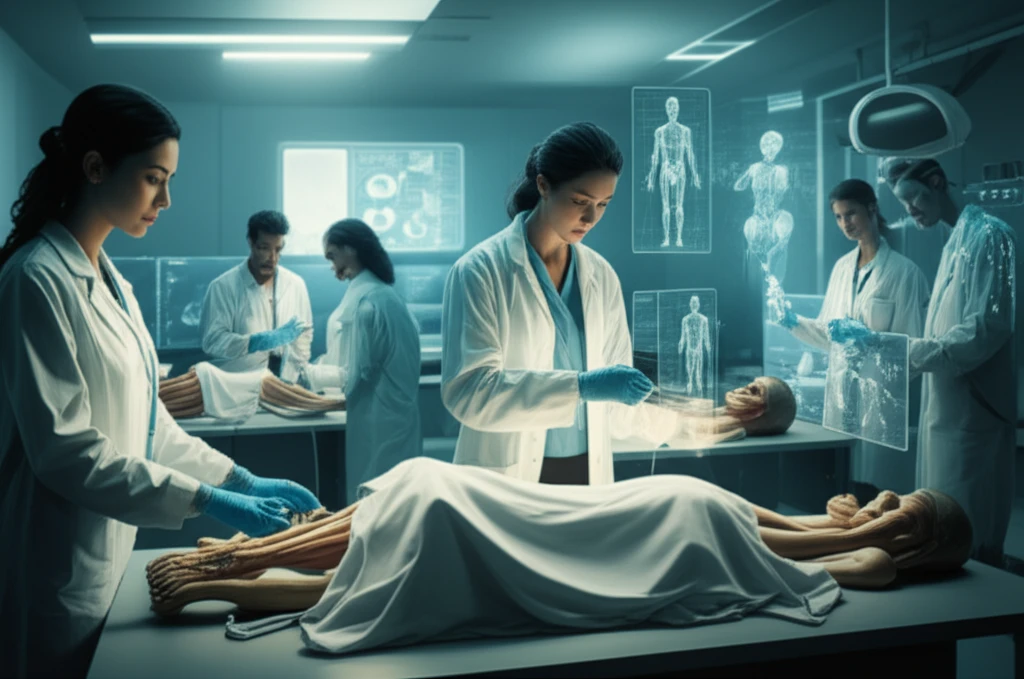
Anatomy Education Revolution: How One University Is Shaping the Future of Medical Learning
"Discover the innovative approach the University of Queensland is taking to enhance anatomy education for medical students."
The landscape of medical education is constantly evolving, and anatomy, a foundational subject, faces increasing challenges due to growing student numbers and limited teaching resources. This has led to a recognized deficiency in anatomy teaching, prompting innovative solutions to bridge the gap and ensure будущие healthcare professionals receive the best possible training.
Responding to this need, the University of Queensland's Discipline of Surgery developed an extracurricular applied anatomy course in 2010. This program aimed to cater to the specific requirements of clinical students in their third and fourth years, accommodating their varying levels of prior knowledge in anatomy. The course was meticulously designed to deliver tangible learning outcomes by employing a clinically oriented anatomy education model that leverages prosected specimens and advanced computer resources.
What sets this course apart is its holistic approach to curriculum development and evaluation, with student representatives actively participating in all aspects. Taught by experienced surgeons, the course provides an engaging overview of whole-body applied anatomy, ensuring students not only learn the subject matter but also understand its practical relevance in a clinical setting.
A Clinically-Oriented Approach to Anatomy Education

The University of Queensland's anatomy course distinguishes itself through its clinically oriented approach. Unlike traditional anatomy courses that rely solely on textbooks and lectures, this program uses prosected specimens and computer resources to provide a hands-on, interactive learning experience. This model allows students to see and understand the real-world applications of anatomical knowledge, bridging the gap between theory and practice.
- Expert-Led Tutorials: Over seven Saturday mornings, students benefited from 2-hour tutorials led by surgeons with expertise in specific fields of regional anatomy. This scheduling minimized disruption for both surgeons and students.
- Diverse Educational Resources: The course incorporated various educational resources, including three-dimensional virtual modeling and carefully prepared pathology specimens, providing students with a comprehensive understanding of anatomical structures and their clinical relevance.
- Regular Assessments: Participants completed a short multiple-choice test before each week's tutorial, reinforcing their learning and identifying areas for improvement. The course concluded with a wet laboratory session, where students could examine prosected cadaveric specimens at multiple stations, with a one-to-five surgeon-student ratio.
- Post-Course Evaluation: To gauge the effectiveness of the course, students completed a post-course exam consisting of collated pre-tutorial multiple-choice questions and a five-point Likert-scale evaluation form.
Expanding the Horizons of Anatomy Education
The University of Queensland's applied anatomy course has proven to be a valuable addition to medical education. The course structure is time-efficient and cost-effective, addressing a critical need for supplemental anatomy education. By incorporating clinically oriented teaching methods and diverse educational resources, the program effectively enhances students' knowledge, skills, and confidence in anatomy.
However, the authors acknowledge that, like other extracurricular initiatives, this course does not deliver educational benefits to an entire cohort of students. To address this limitation, further development and evaluation are required to integrate the benefits of such extracurricular courses into the wider medical curriculum within the constraints of graduate MB BS programs.
Building on the success of the initial course, the University of Queensland has expanded its offerings to include two courses in 2011. This expansion reflects the institution's commitment to providing high-quality anatomy education and meeting the evolving needs of medical students. As medical student numbers continue to rise and teaching resources face increasing pressure, innovative programs like this one will play a crucial role in shaping the future of medical education.
